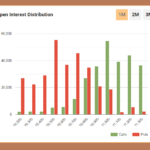Price Formula
If you take any course in futures trading, then you will be first told about the formula for determining the price of futures. But we deliberately did not explain this to you for a long time. The main reason for doing this was because we believe that most people who trade in futures trade based on technical analysis. So they don’t care how the prices are fixed. A little knowledge of that formula is enough for them. However, if you want to trade using quantitative strategies, such as through calendar spreads or index arbitrage, then it is very important for you to know this formula. By the way, there is a complete module for you on Trading Strategies i.e. trading strategy in which the strategy will be talked about and there you will be explained it in detail. But this initial information to be given now will be very useful for you for that module.
You will remember that in the last few chapters we have said many times that the biggest reason for the difference in the prices of spot and futures is the formula for determining the prices of futures. So let us now understand on the basis of which formula the prices of futures are determined.
We know that the price of a futures instrument varies depending on the price of its underlying asset. If the price of the underlying asset goes down then the price of the futures goes down and if the price of the asset goes up then the price of the futures also goes up. But still there is a difference between the underlying price and the futures price. Both are different. Like at the moment when I am writing all this, the spot price of Nifty is 8845.5 while the price of current month contract of Nifty is 8854.7. You can see these differences in the snapshot below. This difference between the two prices is called the basis or spread. In this example the spread of Nifty is 9.2 points (8854.7 – 8845.5).
The reason for this difference in price is the spot-future parity. Spot-future parity is the difference between spot and futures prices due to factors such as interest rates, dividends and distance from expiry. It is a mathematical formula that calculates the price of futures on the basis of comparison with the price of the underlying. This is also called the futures pricing formula.
The futures pricing formula is
Futures price = Spot price ×(1+rf -d)
Futures Price = Spot price *(1+ rf – d)
Here
rf = risk-free rate
d = dividend
This is the risk free rate that you can get for the whole year i.e. 365 days. But since the expiry is after one, two and three months, the 365 days rate will have to be revised according to the same time period. so now the new formula will be
Futures price = Spot price × [1+rf × (x/365)-d]
Futures Price = Spot price * [1+ rf*(x/365) – d]
Where
X = Days left to expiry
You can consider RBI’s 91 Day Treasury Bill as short term risk free rate. You will find it on the home page of RBI. We are giving a screen shot of it below.
As you can see in the above picture the current rate is 8.3528%. Keeping this in mind, let us now work on an example. Suppose spot price of Infosys is ₹2280.5 and there are 7 days left for expiry. So what should be the price of this month’s futures contract of Infosys?
Futures price = 2280.5× [1+8.3528%(7/365)] -0
Futures Price = 2280.5 * [1+8.3528 %( 7/365)] – 0
Remember that Infosys is not to pay dividend for the next 7 days, so the dividend will be zero. According to this new formula, the future price will be ₹ 2283. This is called the future value of the futures. But when you look down you will see the futures price ₹2284. This is called the market price or market price of this contract.
The difference between fair value and market price is because of things like transaction charges, taxes and margins. But overall we can say that fair value tells what should be the future price given the risk free rate and distance from expiry. Now let’s go ahead and calculate the price of the mid month and far month contracts.
Mid Month Price Calculation
Days left to expiry = 34 (Contract will expire on 26th March 2015)
Number of days to expiry = 34 (as the contract expires on 26th March 2015)
Futures price = 2280.5 × [1+8.3528%×(34/365)]-0
Futures Price = 2280.5 * [1+8.3528 %( 34/365)] – 0
= 2299
Far Month Calculation
Days left to expiry = 80 (Contract will expire on 30th April 2015)
Number of days to expiry = 80 (as the contract expires on 30th April 2015)
Futures price = 2280.5 × [1+8.3528%×(80/365)]-0
Futures Price = 2280.5 * [1+8.3528 %( 80/365)] – 0
= 2322
Now let’s see what is the price of mid-month contract on NSE:
 Now let’s see what is the price of Far Month contract on NSE:
Now let’s see what is the price of Far Month contract on NSE:
Here again, you will see the difference between Fair Value and Market Price. I think the difference is because of the cost associated with the contract at that time. Apart from this, it may also happen that the market expects some dividend at the end of the year. But the important point here is that as the number of days left to expiry increases, so does the difference between the fair value and the market price.
Now we move on to another principle like Discount – Discount and Premium – Premium. Marketers use both these words a lot.
If the futures contract is trading above the spot price, it is said that the futures market is trading at a premium. However, the point to be noted is that this is quite natural from the accounting point of view. Another thing you should know is that while the term premium is used in the equity futures market, it is called contango in the commodity derivatives market. But both mean the same thing that the price of the futures is more expensive than the spot price.
Here’s a look at the price graph of Nifty spot and futures with expiry as on 21st January 2015. You can see that the Nifty futures price is showing above the spot throughout the series.
Now I want to draw attention to a few things:
- You can see that at the beginning of the series (the part shown by the black arrow) the gap between the spot and futures prices is very high. This is because the expiry of the series is very far away at that time and hence the effect of the x/365 factor is more on the future price formula.
- Futures are priced at a constant premium to spots throughout the series.
- By the end of the series (shown by the blue arrow) the futures and spot prices have become equal. This always happens, whether the futures price is at a premium to the spot price or at a discount over the entire series, but on expiry both the prices converge.
- If you have created a position in futures and you do not square off it before expiry, the exchange automatically squares off the position and settles it based on the spot price. You know that on the day of futures expiry, the spot and futures prices become one.
But that doesn’t always happen. Due to the gap between demand and supply, sometimes it also happens that the price of futures is lower than that of the spot. In this situation, it is said that the futures prices are at a discount. Such a situation in the commodity market is called backwardation.
Use of Price
Before concluding this chapter, let us also see the use of futures pricing formula once. Like we said at the beginning of the chapter, if you trade using quantitative strategies, then this formula will come in handy for you. Remember here that this is just a sample or example, we will discuss the trading strategy more later. imagine that
Wipro spot price = 653
rf – 8.35%
x = 30
d = 0
Based on this, the future price will be
Futures price = 653× [1+8.35%(30/365)]-0
= 658
In this, even when the market charges are applied, the future price should be around ₹658. But what if the price of a futures contract is significantly different? Let’s say 700? This means that a trade is made here. Usually there should be a difference of 5 points between the spot and the future, but sometimes this difference increases and here it reaches 47 points. To take advantage of such opportunities, a trade should be made immediately.
How do you do this trade? When we see that the price of a futures contract is much higher than its fair value, it means that the prices in the futures market are very expensive or we can also say that the spot prices are very cheap.
Such a situation is called spread trade and in spread trade you buy cheap asset and sell expensive asset. So now all you have to do is sell Wipro Futures as well as buy Wipro in the spot market. Let’s see how much profit can be made in this-
Bought Wipro in the spot @653
Sold to Wipro in Future @700
Now we know that the spot and futures price will converge on the expiry day. Let us see if these spot and futures at different prices of 675, 645, 715 come together then how much profit or loss is made for us
| Expiry Price | Spot Trade (Long) P&L | Future Trade (Short) P&L | Total P&L |
| 675 | 675 – 653 = +22 | 700 – 675 = +25 | +22 + 25 = +47 |
| 645 | 645 – 653 = -08 | 700 – 645 = +55 | -08 + 55 = +47 |
| 715 | 715 – 653 = +62 | 700 – 715 = -15 | +62 – 15 = +47 |
As you can see the spot and futures prices will be locked for you when you place the trade and you will get a spread i.e. the difference between the two. After this, in whichever direction the market goes, there will be no difference on this profit because it is based on spread. Keep in mind here that to take advantage of this, we have to cut this position before the expiry. This means that you have to sell Wipro in the spot market and buy it in the futures market before the expiry. Such opportunities are called Cash and Carry Arbitrage.
Calendar Spread
Cash and carry is a form of arbitrage called calendar spread. With the calendar spread, we try to take advantage of the arbitrage or difference that occurs between two futures contracts, two contracts that have the same underlying but different expirations. Let’s use Wipro’s example here.
Wipro spot price = 653
Fair value of current month futures (after expiry 30 days) = 658
Market value of current month futures = 700
Fair Value of Mid Month Futures (Expiry after 65 days) = 663
Market Value of Mid Month Futures (Expiry after 65 days) = 665
It is clear from the above example that the futures contract of the current month is selling very high. But the mid-month contract is close to its actual fair value. After seeing this, I have to make a guess that the current month contract will come down and the mid month contract will remain around its fair value.
So now the current month contract is costlier than the mid month. So we will sell the expensive contract and buy the cheap contract. Then the trade will be made that I have to buy the mid month futures contract at 665 and sell the current month contract at 700.
So what will be the spread? The difference between both the futures contracts i.e. 700-665=35
To take advantage of this spread, the trade will be made like this
Sell Current Month Futures @ 700
Buy Mid Month Futures @ 665
The point to note here is that since you are buying two different month contracts of the same underlying futures, your margin will be very less. Because it is a hedged position.
After starting this trade, you have to wait for the expiry of the futures of the current month. You know that the current month futures and spot price will converge at the expiry. You should close your position just before this happens i.e. just before the current month contract expires.
Let’s see what the P&L looks like under certain circumstances.
| Exprice Price | Current Month (Short) P&L | Mid Month (Long) P&L | Net P&L |
| 660 | 700 – 660 = +40 | 660 – 665 = -5 | +40 – 5 = +35 |
| 690 | 700 – 690 = +10 | 690 – 665 = +25 | +10 + 25 = +35 |
| 725 | 700 – 725 = -25 | 725 – 665 = +60 | -25 + 60 = +35 |
You should remember that you have assumed that the mid-month contract will remain close to its fair value. Well according to my experience it will be so.
Another important thing to remember here is that whatever is discussed in this chapter about spreads is just a sample of a trading strategy. In the coming modules, we will discuss this in detail and show you how you can use them.
Highlights of this chapter
- The futures pricing formula states that futures price = spot price × [1+rf × (x/365)-d]
- The difference between the spot price and the futures price is called the basis or spread.
- The price of futures calculated on the basis of futures pricing formula is also called theoretical fair value.
- The price at which the futures contract is being sold in the market is called the market price or market value.
- Theoretical Fair Value and Market Value should be similar to each other but there may be slight differences as some of the expenses are added separately.
- If the price of the futures is higher than the spot, then it is said that the futures is selling at a premium and if the price of the futures is below, then it is said to be getting at a discount.
- In the commodity futures premium is called contango and discount is called backwardation.
- Cash and carry is a spread where you buy spot and sell futures.
- Calendar spread is also a different form of cash and carry. Here you buy one contract and sell the other contract while both have different expiry but the underlying is same.

Gaurav Heera is a leading stock market educator, offering the best stock market courses in Delhi. With expertise in trading, options, and technical analysis, he provides practical, hands-on training to help students master the markets. His real-world strategies and sessions make him the top choice for aspiring traders and investors.









